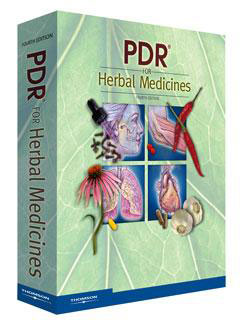Acupuncture and TCM Books
PDR for Herbal Medicines, 4th ed. (Physician's Desk Reference for Herbal Medicines)
by Joerg Gruenwald, Thomas Brendler, Christof Jaenicke
THE MOST AUTHORITATIVE RESOURCE ON HERBAL MEDICINES
Seeking to separate scientific from anecdotal evidence, the new PDR ® for Herbal Medicines, Fourth Edition provides physicians with an updated reference so they can better advise patients who ask about specific herbal remedies.
Serving as the closest available analog to FDA-approved labeling available in the world of herbal medicines, PDR ® for Herbal Medicines, Fourth Edition provides the latest scientific data in the most comprehensive herbal reference compiled including Commission E indications, the closest thing to an approved usage guide in the world of herbal medicines. Over 700 monographs have been updated to include recent scientific findings on efficacy, safety and potential interactions; clinical trials (including abstracts); case reports; and meta-analysis results. There are also updated sections on enhanced patient management techniques and nutritional supplements.
As the complicated world of herbal and complementary medicine evolves, there is only one complete and trusted clinical and diagnostic manual for learning how to prescribe herbal medicines that medical practitioners can turn to, the PDR ® for Herbal Medicines, Fourth Edition.
Indexed by common name
Asian, Indian and Homeopathic Herbs Index
Safety Guide
Daily dosage information for unprocessed herbs and commercially available brand name products
Manufacturers' Index, including name, address, contact information and product list
Trade names of available products added to each monograph
Expanded Drug/Herb Interaction Guide
Therapeutic Category Index
Clinical Management of Interactions
Interest in and usage of herbal preparations as alternatives to pharmaceuticals has exploded in recent years. Having a complete herbal reference on hand is now absolutely necessary for doctors and other healers when a patient wants to add herbs--let's say St. John's wort--to his drug regimen. Should the patient stop taking the Paxil he's been on for depression, and if so, how long must he wait before he can start taking the St. Johns wort, and what's the recommended dosage?
The PDR for Herbal Medicines will go a long way towards answering such questions. The physician in this case would learn, after consulting the PDR, that "St. John's wort taken concomitantly with an SSRI ... may lead to an increased effect and possible toxicity 'serotonin syndrome', e.g., sweating, tremor, flushing, confusion and agitation." The same physician will also learn that the German Federal Health Authority's Commission E, which has studied the effects of hundreds of herbs, approved St. John's wort for depressive moods, among other conditions.
For more information, the physician can read about the trade names, descriptions of all the medicinal parts of the plant, actions and pharmacology (including the compounds and their effects, with citations), the results of clinical trials, contraindications, precautions and adverse reactions (photosensitization is a biggie for St. John's wort), dosage information, and a complete list of literature citations.
The second edition of this mammoth guide includes over 100 entries more than the first, bringing the total to more than 700. Additions include a selection of Asian herbs, such as Buplerum Chinese (also known as Chinese thoroughwax), which is used in Chinese medicine as an anti-inflammatory, and homeopathic preparations; a directory of manufacturers (with Internet addresses when available), a safety guide (don't use kava kava while nursing), and more. There's even a section that lists unproven uses for each herb. But make no mistake: this is a mainstream reference that relies on scientific proof above all. Therefore, this is not a guide for everyone, but for scientific and medical reference, it's a helpful and comprehensive resource, and even those who push the herbal envelope will find much valuable information here. --Stefanie Durbin --This text refers to the Hardcover edition.
 PDR for Herbal Medicines, 4th ed. (Physician's Desk Reference for Herbal Medicines)
PDR for Herbal Medicines, 4th ed. (Physician's Desk Reference for Herbal Medicines)